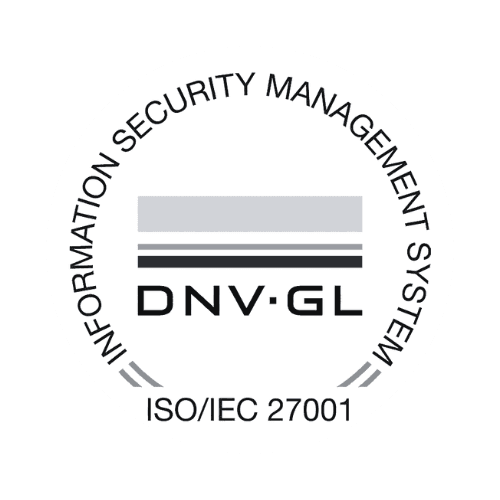Nichts verpassen & anmelden:
Written by AI
SaaS Implementation: Success Factors and Common Pitfalls
The implementation of Software-as-a-Service (SaaS) solutions has become a popular option for businesses of all sizes. These cloud-based applications offer a variety of benefits, including cost savings, flexibility, and scalability. However, some challenges may arise during SaaS implementation that should be avoided. In this article, we will discuss the success factors and common pitfalls associated with SaaS implementation.
Understanding SaaS Implementation
Before delving into the success factors and pitfalls, it is important to understand the concept of SaaS implementation. SaaS refers to the delivery of software over the Internet, rather than installing applications on the local systems of users. This has the advantage that businesses do not have to invest in expensive infrastructure and equipment to utilize the software.
SaaS implementation encompasses the entire process of setting up and customizing the SaaS solution to meet the specific needs of a business. This includes selecting the right SaaS provider, planning and preparation, training the team, and integrating the software into existing systems.
What is SaaS and Why is it Important?
SaaS, or Software-as-a-Service, refers to the delivery of software over the Internet. Instead of installing the software on local systems, companies can utilize the applications over the Internet. This allows businesses to quickly access new features and updates without upgrading or maintaining their IT infrastructure.
SaaS offers a range of benefits, including cost savings, scalability, and flexibility. It enables businesses to reduce costs associated with purchasing, installing, and maintaining local software. Additionally, they can scale the software according to their needs and make adjustments to meet the specific requirements of their business.
The Role of SaaS Implementation in the Business Environment
The implementation of SaaS has taken on a crucial role in the corporate landscape. Companies of all sizes and industries are using SaaS solutions to optimize their business processes and enhance their competitiveness.
SaaS implementation allows companies to access new applications and features in a short period without making significant investments in hardware and infrastructure. This flexibility enables businesses to quickly respond to changing market conditions and continuously provide improved services to their customers.
Another advantage of SaaS implementation is that companies can benefit from the experiences and expertise of the SaaS provider. The provider takes responsibility for the maintenance, updates, and security of the software, saving businesses time and resources. Furthermore, companies can leverage the best practices and innovations of the provider to further enhance their business processes.
SaaS implementation also enables businesses to utilize their IT resources more efficiently. Since the software is delivered over the Internet, companies do not need to establish and maintain extensive IT infrastructure. Instead, they can focus their IT resources on more strategic tasks that create direct value for the company.
Key Factors for a Successful SaaS Implementation
To ensure a successful SaaS implementation, several key factors must be considered. These factors help businesses select the right SaaS solution, effectively plan the implementation process, and train and support the team through the changes.
Selecting the Right SaaS Provider
Selecting the right SaaS provider is critical for the success of the implementation. Companies should analyze their needs and choose a SaaS solution that meets those requirements. This includes assessing the functionality, scalability, reliability, and security of the SaaS platform.
It is also important to consider the reputation and experience of the SaaS provider. Companies should ask for references and success stories to ensure that the provider has the necessary expertise and experience to ensure a successful implementation.
Another aspect that companies should consider when selecting a SaaS provider is integration with existing systems and processes. Seamless integration can facilitate the implementation process and increase the efficiency of the company.
Planning and Preparing for SaaS Implementation
Planning and preparation for SaaS implementation is another important factor for success. Companies should develop a detailed plan that outlines the objectives, timeline, and responsibilities for the implementation. It is crucial to involve all relevant stakeholders and ensure clear communication.
During the preparation phase, companies should also ensure that they have sufficient resources to conduct the implementation successfully. This may include assembling an implementation team, training the team, and ensuring compliance with all legal and regulatory requirements.
Furthermore, companies should consider the impacts on existing workflows and employees. A comprehensive impact analysis can help identify potential challenges early and take appropriate actions.
Training and Supporting the Team
Thorough training and support for the team is essential for the success of the SaaS implementation. Employees must have the necessary knowledge and skills to effectively use the SaaS solution and benefit from its advantages.
It is important to offer training programs and ensure that all employees are informed about the necessary training measures. This may include in-person training, online training, or the provision of training materials, depending on the needs of the company.
In addition to training, it is crucial to support the team throughout the implementation process. This can be done by providing resources, training materials, and a dedicated support team. Continuous communication and regular feedback can also help ensure that the team uses the SaaS solution effectively and that any issues are resolved quickly.
Common Pitfalls in SaaS Implementation
Despite the many benefits that SaaS implementation can provide, there are also some common pitfalls that should be avoided.
Lack of Internal Acceptance and Resistance to Change
One of the most common pitfalls in SaaS implementation is the lack of internal acceptance and resistance to change. Employees may be skeptical about the introduction of new technology or work methods and may resist changes.
It is important to provide clear communication and training to highlight the benefits of the SaaS solution and address any concerns. Employees should be informed about the reasons for the implementation and have the opportunity to voice their questions and concerns.
Another important aspect is involving employees in the implementation process. By actively engaging employees, potential resistance can be mitigated, and internal acceptance can be strengthened. This can be achieved through regular meetings, training, and the establishment of a feedback mechanism.
Insufficient Data Migration and Integration
Another pitfall in SaaS implementation is insufficient data migration and integration. Companies must ensure that their data can be successfully transferred from existing systems to the SaaS solution.
It is important to conduct a thorough data analysis before implementation and ensure that the data is properly formatted and cleansed. Companies should also ensure that the SaaS solution can be smoothly integrated into existing systems to ensure efficient data exchange.
In addition to data migration and integration, it is also important to consider the scalability of the SaaS solution. Companies should ensure that the solution is capable of keeping pace with the company's growth and meeting increasing demands.
Security Concerns and Compliance Issues
Security concerns and compliance issues are other pitfalls in SaaS implementation. Companies must ensure that the SaaS solution meets the required security standards and that their customers' data is adequately protected.
It is important to consider the security and compliance aspects during the selection process and ensure that the SaaS provider has the necessary certifications and security measures in place. Additionally, companies should also conduct regular security audits and assessments to ensure that data remains secure and protected.
Another important point is the General Data Protection Regulation (GDPR) that applies in the European Union. Companies must ensure that the SaaS solution complies with GDPR requirements and respects customers' data protection rights.
Strategies for Avoiding Pitfalls in SaaS Implementation
To avoid pitfalls in SaaS implementation, companies can adopt various strategies.
Promoting Acceptance and Engagement within the Team
To promote internal acceptance and engagement, companies should clearly communicate the benefits of the SaaS solution and ensure that employees are actively involved in the implementation process. By involving the team in the decision-making process and training the team, reservations and concerns can be reduced.
It is also important to offer continuous training and support to ensure that employees possess the necessary skills to effectively use the SaaS solution.
Furthermore, companies should ensure that employees are informed about the benefits of SaaS implementation. This can be achieved through the organization of trainings, workshops, and informational events. Through active involvement, employees can develop a deeper understanding of the SaaS solution and increase their acceptance and engagement.
Ensuring Effective Data Migration and Integration
To ensure effective data migration and integration, companies should conduct a thorough analysis and planning in advance. This includes assessing data integrity, data cleansing, and testing data transfer.
It is also important to facilitate communication between IT departments and the affected business areas to ensure that implementation goes smoothly and all relevant data is successfully migrated and integrated.
Additionally, companies should ensure that they have the necessary resources and tools to guarantee smooth data migration and integration. This may involve using specialized software solutions, collaborating with external experts, or providing internal training.
Prioritizing Security and Compliance
Data security and compliance should take priority throughout the implementation process. Companies should ensure that the SaaS provider has sufficient security measures and is capable of meeting the required compliance standards.
It is also important to conduct regular reviews and audits to ensure that data is protected and compliance is maintained.
Furthermore, companies should ensure they have clear policies and procedures for securing and protecting data. This may include implementing encryption technologies, regularly updating security measures, and training employees.
The implementation of SaaS solutions offers companies a variety of benefits, but challenges can also arise. By considering the success factors and avoiding common pitfalls, companies can ensure a successful SaaS implementation and fully leverage the advantages of these cloud-based solutions.
It is essential that companies view the implementation of SaaS solutions as a long-term strategy and continuously work on its improvement. Through regular review and adjustment of the implementation, companies can ensure that they achieve the best possible results and meet their business objectives.








